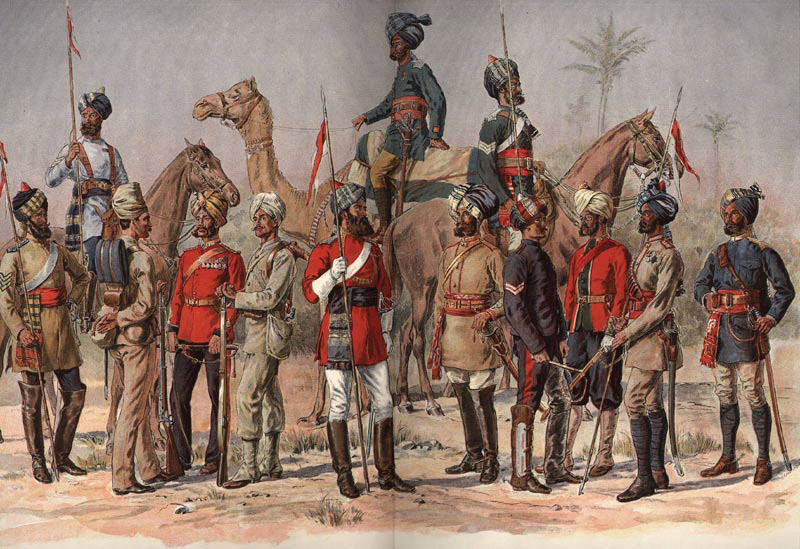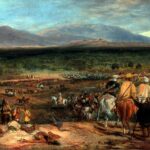British rule in India, which lasted for nearly two centuries from the mid-18th to the mid-20th century, significantly impacted the history of Punjab. Punjab, with its strategic location and fertile lands, played a crucial role in the British colonial administration. The period of British rule brought about profound changes in the social, political, economic, and cultural fabric of the region. Let’s examine the influence of British rule on Punjab history:
Colonial Administration and Governance
Under British rule, Punjab was annexed in 1849 after the Second Anglo-Sikh War. The region was subsequently integrated into the British Indian administration as a province. The British established a centralized administrative system with district collectors and commissioners, replacing the traditional Sikh and Mughal administrative structures. The implementation of English law and the establishment of British-style courts also significantly transformed the legal system in Punjab.
Agricultural Reforms
Punjab’s fertile lands attracted the British, who introduced various agricultural reforms. The construction of irrigation canals, like the Upper Bari Doab Canal and Lower Bari Doab Canal, transformed large tracts of land into prosperous agricultural areas. The British encouraged the cultivation of cash crops like cotton and indigo, leading to increased agricultural productivity. However, these reforms also disrupted traditional agrarian practices and led to the concentration of land in the hands of a few wealthy landlords.
Railways and Infrastructure
The British laid an extensive network of railways in Punjab, connecting it to other parts of India. The railways played a crucial role in facilitating the transportation of goods, including agricultural produce, and helped in integrating Punjab with the rest of the country. The development of roads, bridges, and telegraph lines also improved communication and transportation within the region.
Education and Language
The British introduced English education in Punjab, leading to the establishment of schools and colleges that followed the English medium of instruction. This had a profound impact on the intellectual and educational landscape of the region. While English education provided opportunities for some, it also created a cultural and linguistic divide between those who became anglicized and those who remained rooted in traditional Punjabi culture and languages.
Social and Religious Reforms
During British rule, social and religious reforms were introduced in Punjab. The British attempted to eradicate practices like sati (widow burning) and female infanticide. The Christian missionary activities in the region also saw conversions among some sections of the population. These reforms, though often met with resistance, left a lasting impact on Punjab’s social fabric.
Impact on Political Consciousness
British rule contributed to the rise of political consciousness and nationalism in Punjab. During the late 19th and early 20th centuries, Punjab witnessed the emergence of political leaders and organizations that advocated for Indian independence. Prominent leaders like Lala Lajpat Rai, Bhagat Singh, and Udham Singh hailed from Punjab and played pivotal roles in the Indian freedom struggle.
Partition of Punjab
The partition of India in 1947 had a profound impact on Punjab’s history. As part of the partition, Punjab was divided along religious lines, with the western part becoming part of Pakistan and the eastern part joining India. The partition led to one of the largest mass migrations in human history, resulting in violence, loss of life, and displacement on an unprecedented scale.
Following the Conquest
In 1849, the British took control of Punjab and made it a province of British India. The Sikh Empire had been overthrown, and they now made up a minority in their own country. After defeating the Sikhs in the Second Anglo-Sikh War, the British occupied Punjab. This was carried out to safeguard their northern border and stop the Sikhs from staging another rebellion. The Sikh Empire vanished as a result of the conquest, and the Sikh people were forced into exile in their own country.
Anglo-Sikh War II
Due to their defeat in the First Anglo-Sikh War and the stipulations of the Lahore and Bhairowal Treaties, the Sikhs suffered great humiliation. The terrible treatment meted out to Rani Jindan, who was sent to Benares as a pensioner, stoked Sikh wrath. Mulraj, the governor of Multan, was replaced by a new Sikh governor as a result of an increase in yearly revenue.
In conclusion, the British rule in Punjab had a far-reaching impact on the region’s history. While it brought about certain developments and modernization in infrastructure and governance, it also disrupted traditional socio-economic structures. The legacy of British colonialism continues to shape present-day Punjab, influencing its politics, culture, and identity. Understanding the influence of British rule is crucial in comprehending Punjab’s historical trajectory and its place in the broader context of Indian history. The rest of British India and Punjab, according to Queen Victoria’s Queen’s Proclamation, were placed directly under British rule in 1858. The area was once known by the name Sapta Sindhu, which was inspired by the Vedic territory where seven rivers emptied into the sea. One of the last areas of the Indian subcontinent to be governed by the British was the Punjab region, which was mostly taken over by the East India Company in 1849. Punjab was placed directly under British rule in 1858 along with the rest of British India.








